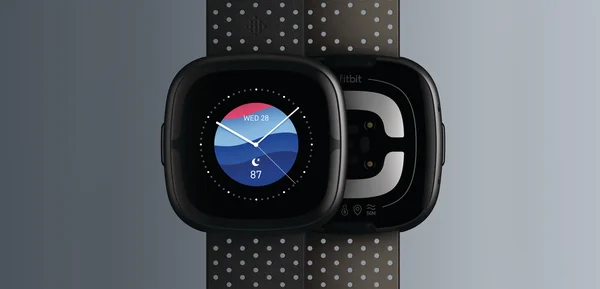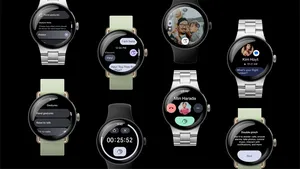How Fitbit can help you measure stress — and use it to your advantage

Dr. Megan Jones Bell knows a thing or two about stress — not just because she experiences it, but because she studies it, too. Megan is the clinical director of consumer health at Google, where she leads a clinical team supporting strategy, research and product development for Fitbit, Google Pixel Watch and Pixel phones. She’s also a clinical psychologist and the director of Google’s Mental Health Center of Excellence, which is dedicated to helping people find the right information and resources to improve their mental health and wellbeing.
Megan and her team helped create Fitbit and Google Pixel Watch stress measurement and management tools, which not only tell you when you’re experiencing stress and what your baseline stress levels are, but also prompt you to try and understand what’s causing this reaction.
“In order to effectively cope with stress and set healthy boundaries for yourself around stress triggers, you need to be able to recognize what stress feels like in your body and mind, identify those triggers and see what strategies work for you to manage stress,” Megan says.

What is stress, anyway?
Everyone experiences stress in one way or another. At its most basic, stress is a series of physical responses to something: your heart rate increases, your body temperature rises, maybe you even break a sweat. Fitbit technology measures these physiological changes and notifies you if it logs a stress response. This gives you a chance to step back and think about what’s going on — because while we think of stress as inherently bad, that’s not always the case.
Body responses are moments of physical stress or excitement, identified from your heart rate, sweat secretion, and skin temperature. Use these to reflect on your stress.

“Did you just get a promotion and you’re excited or did you lose your car keys and you’re upset?” Megan says. “It matters what’s going on in your life and your emotions, but your body doesn’t know the difference — it just knows it’s stressed.” In some instances, experiencing some stress can actually be helpful. “Maybe you’re feeling stressed about a presentation you have to give in a meeting,” Megan says. “A little bit of stress around that could actually lead you to being more effective and have some good energy in the presentation.” Another example of helpful stress is how you might feel before a big race; that extra adrenaline rush could help you reach peak performance.
But stress can become a significant problem when it causes distress or when it’s chronic, which can potentially lead to negative health outcomes like trouble sleeping, anxiety or high blood pressure. What matters is what you’re able to do about or with your reactions to stress; our approach with Fitbit and Google Pixel Watch devices is three-fold: detection, intervention and reflection.
Using stress alerts to notice patterns
So first, let’s talk about detection. “Fitbit stress alerts and Google Pixel Watch’s Body Responses help you connect the psychological to the physiological,” Megan says. Body Response uses the Google Pixel Watch’s cEDA (continuous electrodermal activity) sensor to detect tiny changes in your skin's sweat level, which can point to possible signs of stress when combined with heart rate, heart rate variability and skin temperature. (And it’s smart enough to know the difference between stress or a workout, so sweating while exercising won’t trigger the algorithm.) There’s also the Fitbit Charge 6’s spot check feature, which uses the same activity to give you an in-the-moment look at your stress levels.
“These kinds of alerts are a really useful opportunity for you to bring awareness to how you’re feeling and think about what’s going on in your life or around you that affected your emotional state and your body.” That’s when you get to the intervention stage — you could use the Charge 6’s spot check to see your stress spike and opt to try one of the suggested mindfulness activities. Or you can use Google Pixel Watch’s breathing exercises. On the flip side, maybe you’re just feeling energized, and it’s a good opportunity to go for a run or attack your to-do list.
Then eventually, you can reflect. “Noticing the reaction you’re having and tying it to what’s happening with you is a critical skill that empowers you to learn from your surroundings or possibly change them,” Megan says. “Just being able to see and connect that, 'Oh, something that happened had an effect on me,’ is really important.” Features like Stress Management Score and mood logging show you trends over time, too, so you can get a bigger picture of your mental health. As Megan puts it, in order to change something, you have to notice it first. “Then, you can start to identify your signs of stress, notice your response — whether mental, physical or both — and start to take steps to manage it.”






